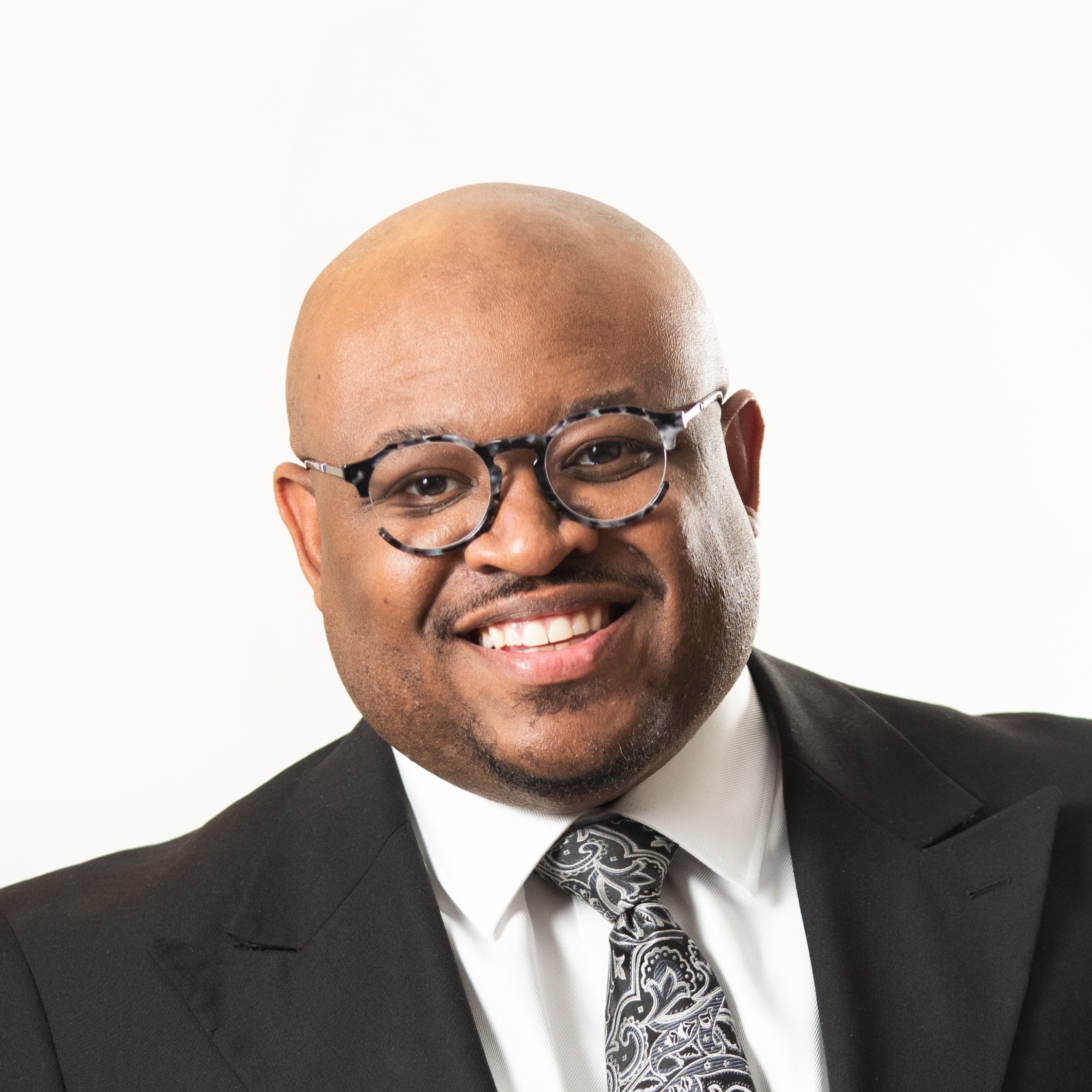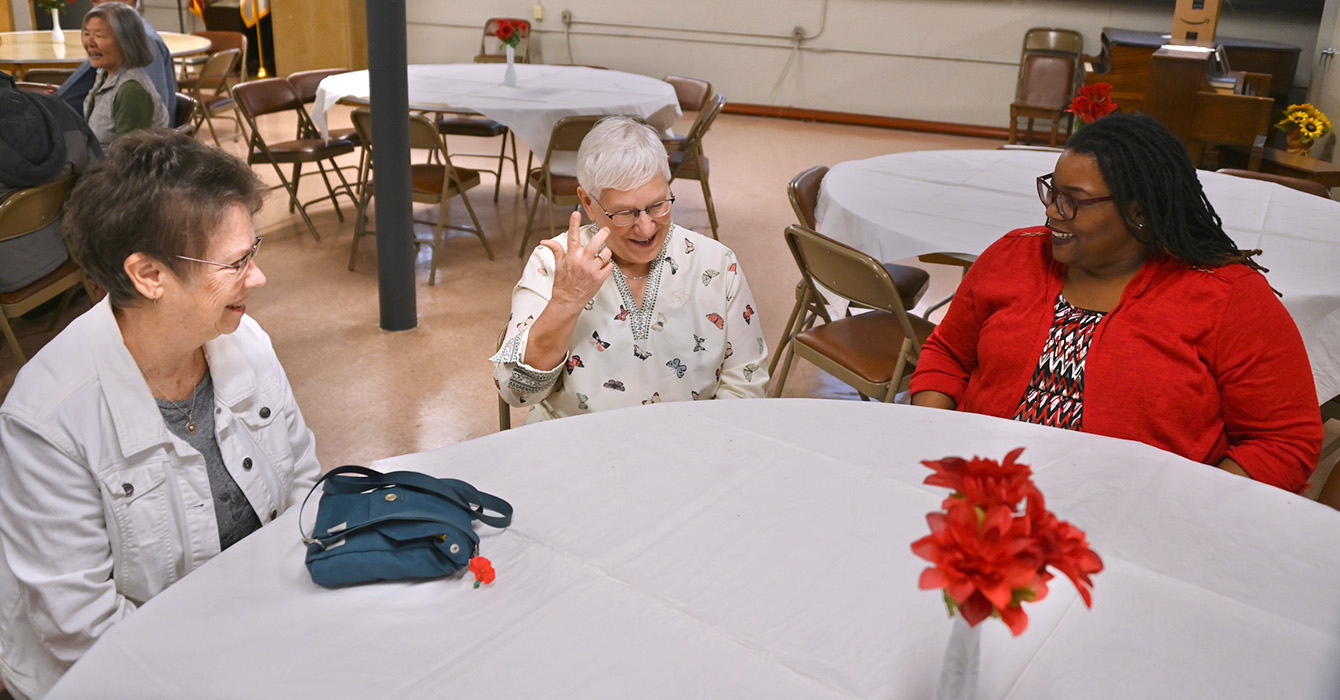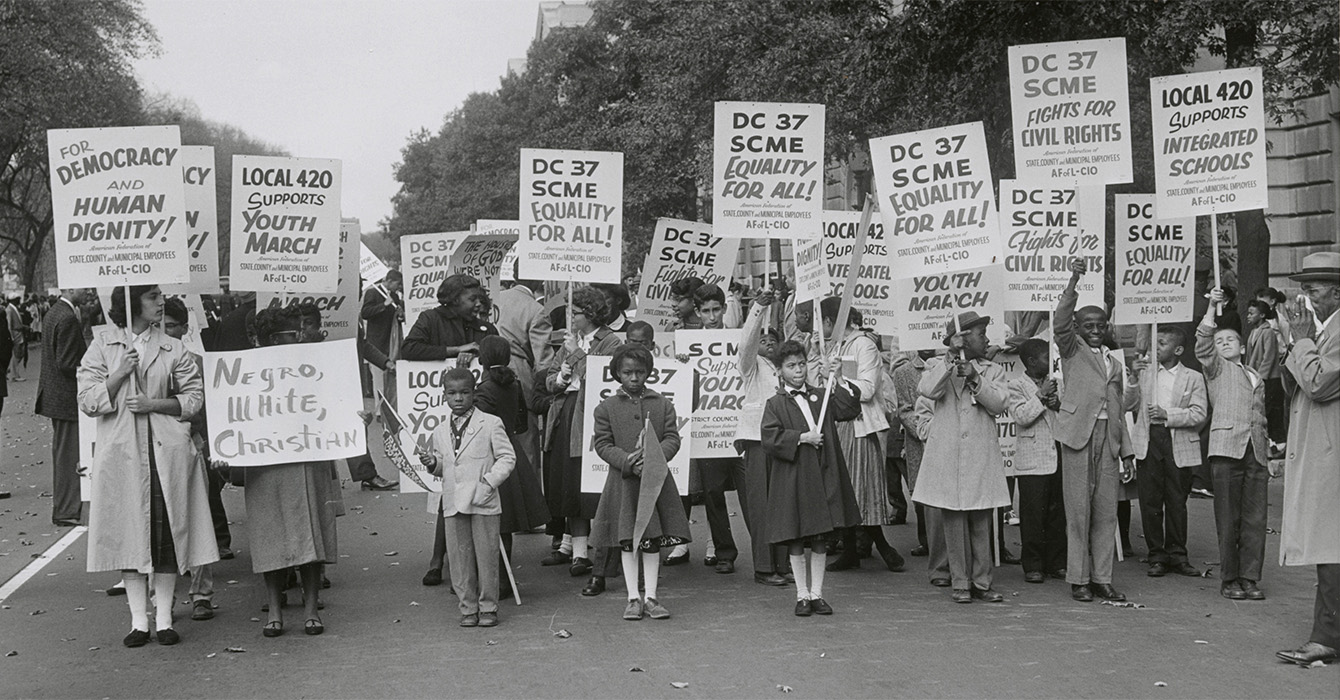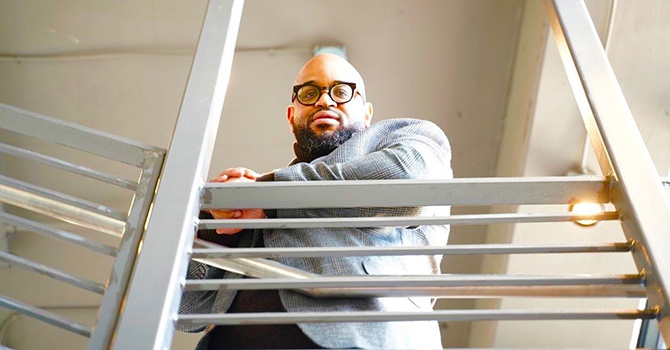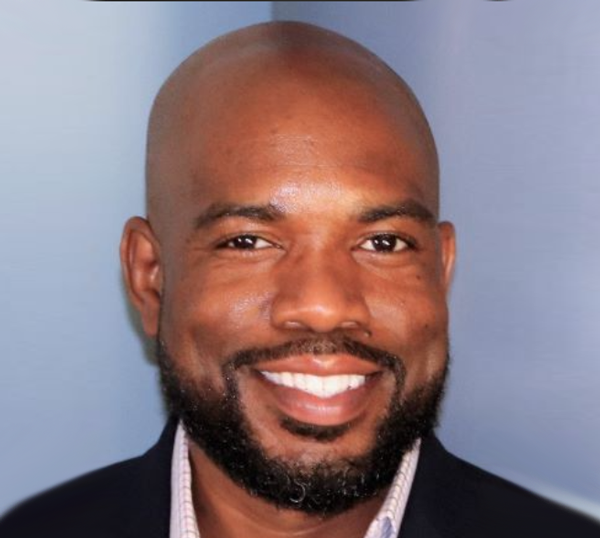Despite the fact that women make up half the graduates at institutions of higher learning, the top leadership is predominantly male. This pattern is even more pronounced at Christian colleges and universities, says Karen A. Longman, an expert in women’s leadership.
But that shouldn’t be the case, she said: “Christian higher education should be leading the way in terms of modeling a kingdom perspective on valuing gifts and abilities, and freeing up what is packed into every student to make the biggest contribution with the life that that student has been given.”
Longman is a professor in the department of higher education at Azusa Pacific University, where she has been on the faculty since 2006. Before that, she served as vice president for professional development and research at the Council for Christian Colleges & Universities, where she continues to serve as a senior fellow and to coordinate CCCU Leadership Development Institutes, including the Women’s Leadership Development Institute.
She has researched and published widely in the field of women’s leadership in Christian higher education, including the article “The Secret Sauce: How Developmental Relationships Shape the Leadership Journeys of Women Leaders in Christian Higher Education.”
 She received a Ph.D. from the Center for the Study of Higher Education at the University of Michigan and a master’s degree from Trinity Evangelical Divinity School.
She received a Ph.D. from the Center for the Study of Higher Education at the University of Michigan and a master’s degree from Trinity Evangelical Divinity School.
She spoke to Faith & Leadership’s Sally Hicks about what motivates women to lead and how Christian leaders can prepare women and people of color for leadership roles. The following is an edited transcript.
Faith & Leadership: You’ve studied women’s leadership development, largely in the context of the colleges and universities that are part of the CCCU. Why is that important?
Karen Longman: I think that keeping half the human race held back from using their gifts and from walking into their calling and from being affirmed in how they are gifted to make a contribution with their lives -- I think that’s part of a fallen world.
The world needs what women bring.
For a variety of reasons, that has not been happening historically, because the leadership of those campuses that are identified as Christ-centered -- we use the parameters and the membership guidelines of the Council for Christian Colleges & Universities -- tends to be more male and more white than in secular higher education.
The church should be doing better to free up giftedness and affirm calling in a way that deploys every human being, regardless of the boxes we tend to put people in.
F&L: If you were a person in leadership in a Christian institution and you wanted to cultivate women leaders, what would you recommend?
KL: Before I talk about challenges for women, I also want to acknowledge that people of color need the same opportunities and developmental initiatives.
First, I would encourage the leadership of an institution or an organization to take a hard look at the status quo, the current realities, the demographics of who is in leadership. I think just being intentional and aware of the realities is an important starting point.
The second recommendation comes from a verse from Ephesians 2. Every individual has been gifted to do good works, and the job of the body of Christ -- [including] Christian higher education -- is to spot that potential, affirm that potential. People in authority, whether it’s organizational leadership roles or faculty, have a huge potential to speak into the lives of others.
In research we did that looked at emerging leaders, over half the women said their most defining moment on their leadership journey was a single conversation -- sometimes a single sentence -- where someone spoke into their life and said, “You are really good at this” or, “Think about doing that, because of your natural gift mix.”
If current leaders see someone with potential, whether it’s a student or a very junior employee, give them opportunities to be doing something bigger so that women are not just kept down in functional positions and dumped on because we’re very responsible and loyal and hardworking and conscientious and trying to please people.
A leader is viewed as someone who sees the importance of the institutional mission or the organizational mission and speaks into the broader picture -- not just who has their head down and keeps doing micro work.
Along the relationship line, to the extent that women and people of color can be networked and find support within the institution and beyond the institution, that’s really important.
One of the things we’ve seen with the women’s leadership development work is that just having a network of professional women committed to Christian higher education that’s bigger than their institution is important. Because often, it gets lonely within their institution or they get pigeonholed within their institution. This is what we call a constellation of developmental relationships.
F&L: OK, so the reverse question: If you were going to advise a woman who wants to take on a leadership role, what would you say?
KL: If we’re talking about an institutional setting, I would encourage a book discussion group. We do a book club here called Leaders Are Readers.
There are wonderful resources in the last decade that are very encouraging. I think the more women read the current literature, popular and scholarly, the more confidence they’ll have that the world is changing and needs to change.
F&L: What are the unique leadership issues for women in Christian institutions?
KL: Well, I’d start broader. There are unique leadership issues for women in general. Herminia Ibarra [Charles Handy Professor of Organizational Behavior at London Business School] writes about “second-generation” workplace gender bias -- the things that are in the water of organizations and corporations, the subtle signals that either hold women back or are contrary to what women tend to value. She deals primarily with the corporate world.
Obviously, all women are not alike, and all men are not alike, and gender is a continuum, so I don’t want to oversimplify this.
There was research that came out of Princeton, which was compared with other Ivy League schools, by Nan Keohane. She was asked to chair a study on undergraduate women’s leadership on the 40th anniversary of Princeton going coed, because the curiosity was, Why are so few women in high-status, highly visible, high-prestige positions? She had done a similar study at Duke.
What they found out was that the female students at Princeton were more interested in leadership roles that served others or benefited others; they intentionally did not seek high-status or high-prestige or high-power positions.
F&L: Is there a particular overlay on those issues for Christian women?
KL: In general, evangelicals have deeply internalized a perception of a hierarchically ordered universe that’s deep in our bones. Somehow we feel that God the Father is somehow hierarchically above Jesus, and then there’s the Holy Spirit, and that the way human beings are supposed to function is that men are in some ways superior to women.
This is from a study that the Pew Charitable Trusts funded several years ago that looked at the behaviors and perceptions and attitudes of evangelicals.
You may be aware of a book that Jimmy Carter wrote called “A Call to Action,” a really interesting book. The subtitle is “Women, Religion, Violence, and Power.”
The point that he makes, which I think is relevant to your question, is that the perception that maleness is superior to femaleness [underlies discrimination and abuse against women], the No. 1 problem facing the world today, and that in the world’s great religions -- Judaism, Islam, Christianity -- somehow this has been distorted to where people are going through life in their heart of hearts really believing that being male is superior to being female.
F&L: You make a distinction between leadership identity development and leadership development. What’s the difference?
KL: Until the last decade or so, the emphasis has been on the concept of leadership development, which has largely been skills and abilities, like learning how to budget, learning how to be effective at strategic planning, team building, that kind of thing.
Herminia Ibarra’s book “Act Like a Leader, Think Like a Leader” really has challenged my thinking.
Basically, she is saying that in the Western world, there is this deep sense that maleness is somehow superior and that men are designed to lead because they’re taller, have deeper voices, have louder voices, are more decisive, are more what they call agentic.
There’s what’s called role congruity theory; we expect certain things of a leader, and often women don’t feel like they either bring those things or want those things. The ideal leader does not look and act like they either do or want to look and act.
Obviously, people who would be effective in leadership need to have skills, and you can build skills. But it’s the interior life of women and the constraints where we keep ourselves down or are not motivated to step into leadership [that can hold us back].
For some reason, being more competitive and viewing the world hierarchically seems to come more naturally to a lot of men. Women tend to downplay credit and ownership and try to create a sense of team and shared celebration of what’s accomplished.
In a male-norm world, they’re not viewed as leaders because they’re not positioning themselves in the way that a male-norm world expects leaders to act.
F&L: Is the solution to that to change the idea of what a leader is or to help women conform to that male-norm model?
KL: In the Princeton study, which came out in 2011, one of [Keohane’s] proposed solutions is what she calls a more capacious definition of leadership.
The way I would interpret that is to say we need to define leadership more around influence and getting work done in a way that people are engaged and motivated for the work that they’re collectively doing.
Essentially, you define leadership in a way that writes women in and empowers them to lead in ways that are comfortable and effective. But not in the male-norm, hierarchical, agentic ways that the world thinks or historically has thought of leadership. I kind of like that.
If you view leadership as the ability to make a difference by influencing others, it gets out of the hierarchical, individualistic model of leadership.
F&L: What are some of the important factors in cultivating women leaders? You are the lead author of a paper called “The Secret Sauce: How Developmental Relationships Shape the Leadership Journeys of Women Leaders in Christian Higher Education.”
KL: There are a number of different things that I think are motivational for women -- that are more true in the lived experience of women than of men.
The research we’ve been doing looks at the internal motivators that get women willing to step into leadership. Within a faith-based context, I would say more women have confidence and willingness to step into leadership if they feel like they’re being responsive and good stewards of the gift mix they’ve been given or of the calling they’ve been given.
Some of the women we’ve interviewed specifically said, “I feel gifted to lead.” If they’re called to lead, even if the environment is unhelpful, they will step into leadership. So giftedness and calling is one thing.
Another is role models and mentors, or -- the latest research we’ve been doing -- being coached and sponsored by people who spot that potential.
There’s also what we’ve called relational responsibility, where women did not personally stick their hand up and say, “I want to be a provost” or, “I want to be a president.”
But because somebody spotted something in them and said, “I need you on my team to be a better leader,” women will step into leadership for the sake of the relational dimension.
In fact, I wouldn’t mention the institution, but someone who was the most senior woman at a pretty significant faith-based university said, “I’ve had five jobs, and every time, somebody said to me, ‘I need you’ or, ‘We need you to do this.’ It wasn’t that I wanted to do it, but I was responding to people speaking into my life, people that I valued and trusted and wanted to support who said, ‘I need you to do this’ or, ‘We need you to do this.’”
It’s a different set of motivations and rewards and values, I think.
F&L: What is the secret sauce?
The power of the natural ability a lot of women have to relate, and how important relationships are -- whether it is relational responsibility or having this constellation of developmental relationships or, from a Christian perspective, being intuitive enough to realize that the world needs a different kind of leadership.
Basically, people are fed up with the brinksmanship and the ego and the combative one-upmanship style that is being elected in a lot of countries. That’s not the kind of environment a lot of people want to live in and contribute their best to.
Sheryl Sandberg in “Lean In” cites Warren Buffett. It’s one of my favorite sections of that book. Basically, how did Warren Buffett do so well? He said, “Well, I’m only competing with half the human race.” So if the other half gets into the race, different people are going to start winning.
Recommended reading about women and leadership
In her interview, Karen A. Longman recommends a book club as a way for institutions to help nurture female leaders and leaders of color. Here are some books, articles and other resources she recommends to get started.
“Act Like a Leader, Think Like a Leader,” by Herminia Ibarra
“The Athena Doctrine: How Women (and the Men Who Think Like Them) Will Rule the Future,” by John Gerzema and Michael D’Antonio
“A Call to Action: Women, Religion, Violence, and Power,” by Jimmy Carter
Catalyst.org, website of Catalyst, a global nonprofit building workplaces that work for women
“The Difference: How the Power of Diversity Creates Better Groups, Firms, Schools, and Societies,” by Scott Page
Duke Women’s Initiative Report, by Susan Roth and Nannerl O. Keohane, committee chair
“Executive Presence: The Missing Link Between Merit and Success,” by Sylvia Ann Hewlett
“The Female Vision: Women’s Real Power at Work,” by Sally Helgesen and Julie Johnson
“Forget a Mentor, Find a Sponsor: The New Way to Fast-Track Your Career,” by Sylvia Ann Hewlett
“Lean In: Women, Work, and the Will to Lead,” by Sheryl Sandberg
“Pipelines, Pathways, and Institutional Leadership: An Update on the Status of Women in Higher Education,” report by the American Council on Education
Princeton Report of the Steering Committee on Undergraduate Women’s Leadership, by Nannerl O. Keohane, committee chair
“The Secret Sauce: How Developmental Relationships Shape the Leadership Journeys of Women Leaders in Christian Higher Education,” by Karen A. Longman, Amy Drennan, Julie Beam and Amanda F. Marble
“Women and the Vision Thing,” by Herminia Ibarra and Otilia Obodaru
“Women Rising: The Unseen Barriers,” by Herminia Ibarra, Robin J. Ely and Deborah M. Kolb
“Women’s Leadership Journeys: Stories, Research, and Novel Perspectives,” edited by Sherylle J. Tan and Lisa DeFrank-Cole







